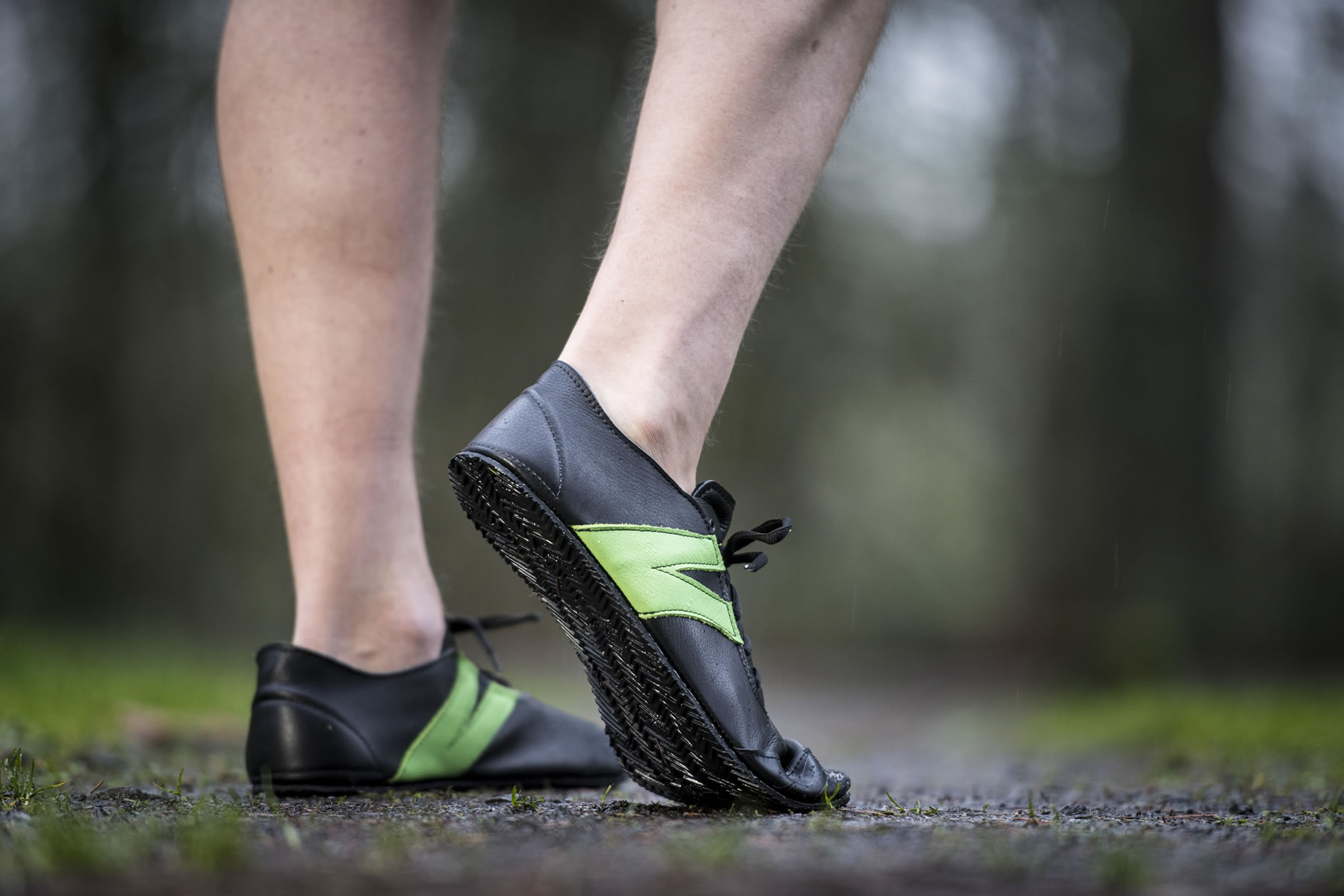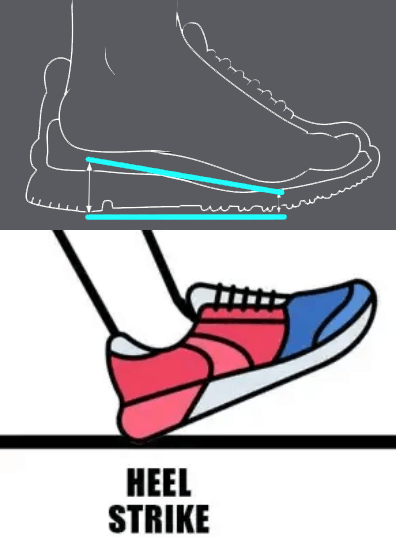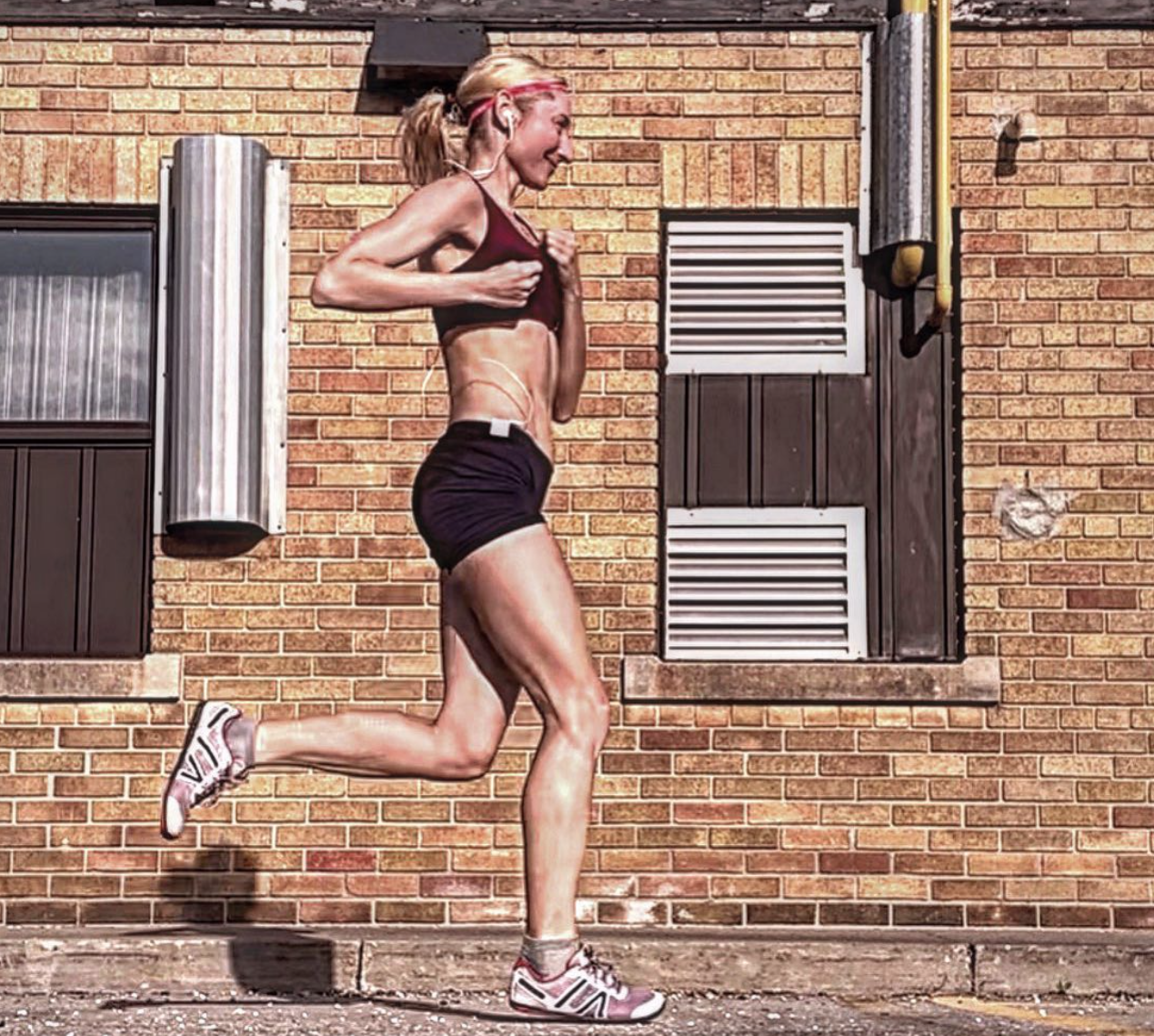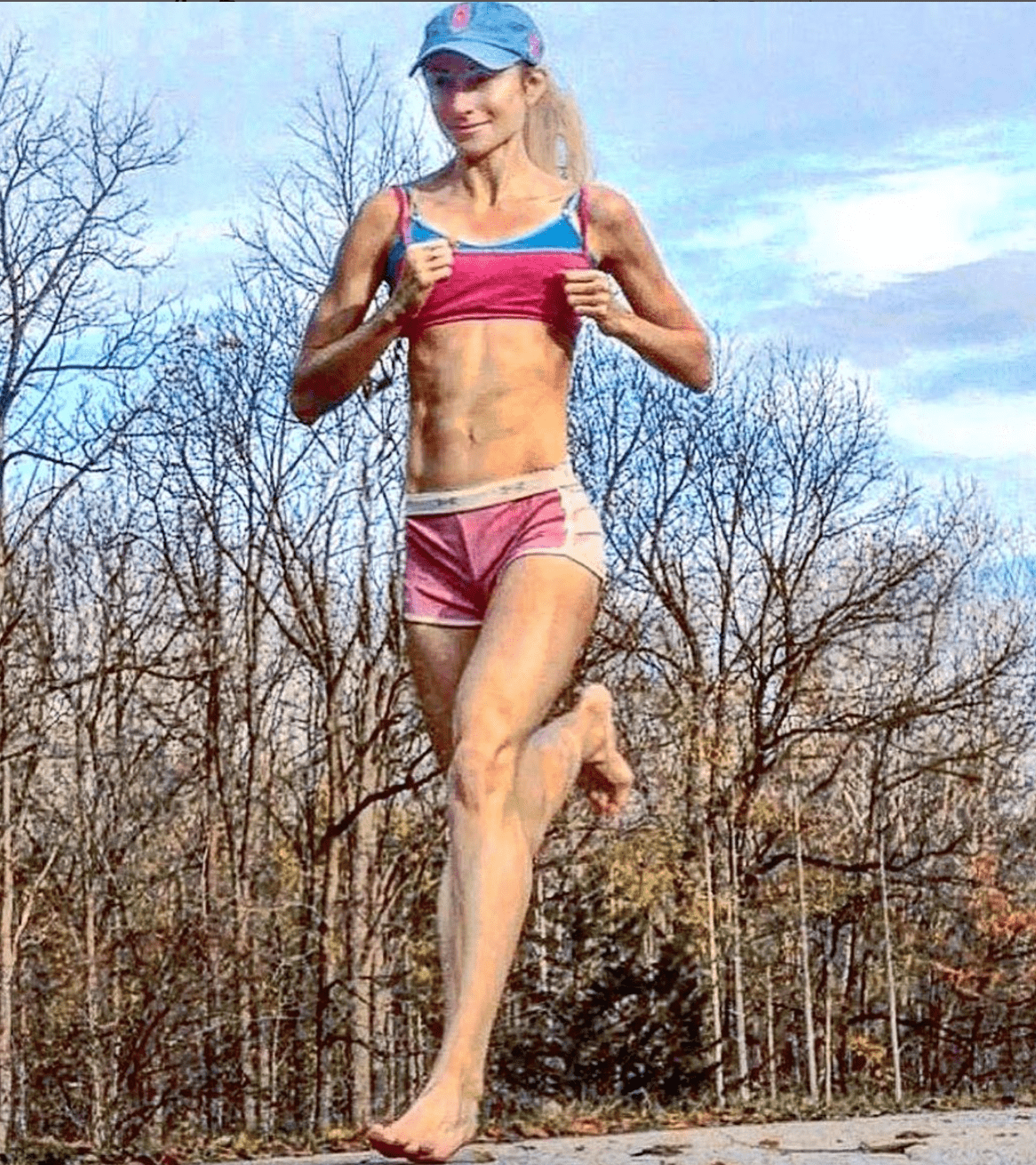Most runners heel strike unintentionally because of the cushioned heeled running shoe, which causes mechanical displacements from head to toe that are difficult to sustain without injury as compared with flatter running shoes or running barefoot.
The elevated heel height of most conventional running shoes was found to alter the body’s center of mass (COM) during running, causing the vertical position of the COM to be higher which offsets gait stability.
Cushioned heel running shoes also alters body posture by increasing plantar flexion, over-striding, anterior pelvic tilt, and trunk extension. As a result, by impact standards, these motor alterations imposed by thick heeled running shoes encourages a force intensive heel strike when running which produces a multitude of impact forces most commonly associated with shin splints, runners knee, lower leg compartment pressure syndrome and lower back pain, to name a few.
Whats most concerning is the thick cushioned heel masks the sensation of these forces, causing the runner to be unaware that the impacts they are generating at heel strike far exceeds the absorption capacity of the cushioned material under the heel, and the musculoskeletal system. This is perpetual disturbance is referred to as ‘sensory insulation’.
The Smaller the Heel, The Less Chance of Heel Striking
More experts agree that the best strategy to avoid heel striking when running, and instead, adopt a forefoot strike, is by wearing zero -drop running shoes and run barefoot, especially on harder surfaces.
Zero-drop running shoes have no heel-to-toe differential, meaning the sole is flat because the toe-box and the heel of the shoe are on the same plane. Running shoes with a flat sole were found to be an incredibly effective mechanical stimulus that encourages a forefoot strike landing. The same occurs when running barefoot. The lack of under-heel protection encourages a forefoot strike because it feels uncomfortable to land heel-first since the heel pad is not sufficient enough to absorb the long-list of impact forces that are unique to heel striking when running.
It’s for all these reasons minimalist running shoes and running barefoot are gaining the reputation for being safer because the flatter the sole, the more the foot seems to interact best with the ground when running. This is because the resultant forces corresponding to forefoot running have been consistently shown to occur at such minimal amounts that even the muscles may not have to use up much energy to absorb impact.
The understand more about how barefoot running optimizes mechanical engagements that reduce injurious risk factors, here are all the articles Ive done on just that! If you live in an area where you can’t run barefoot, here’s a list of the most recommended barefoot running shoes!
If you’ve enjoyed my blog post, you’ll love my Run Forefoot YouTube channel even more because I go into more detail on forefoot running vs heel strike running as well as the health and performance benefits of barefooting!

References:
Barkema, DD., Derrick, TR, and Martin, PE. (2102). Heel height affects lower extremity frontal plane joint moments during walking. Gait Posture 35, 483–488.
Diebal et al. (2011). Effects of forefoot running on chronic excertional compartment syndrome: a case series. IJSPT 6, 312-321.
Kirby, RL and McDermott, P. (1983). Anterior compartment pressures during running with rearfoot and forefoot landing styles. Arch Phys Med Rehabil 64, 296 – 9.
Mika, A., Oleksy, L., Mika P., Marchewka, A. and Clark, BC. (2012). The effect of walking in high- and low-heeled shoes on erector spinae activity and pelvis kinematics during gait. Am J Phys Med Rehabil 91, 425–434.
Mika A, Oleksy Ł, Mika P, Marchewka A, Clark BC. (2012). The influence of heel height on lower extremity kinematics and leg
muscle activity during gait in young and middle-aged women. Gait Posture 35, 677–680.
If you’d like, you can support Run Forefoot by shopping for minimalist footwear from the following places:
Wilding Shoes: https://bit.ly/3lIygQP
Xero Shoes: http://bit.ly/2UIR9YK
Lems Shoes: http://bit.ly/2YZwe1r
Zappos: https://goo.gl/J1CeAd
Amazon: http://amzn.to/2yvQvT4
You can also show support and help keep Run Forefoot going by making a donation in any amount of your choosing: https://www.paypal.me/RunForefoot
Bretta Riches
BSc Neurobiology; MSc Biomechanics candidate, ultra minimalist runner & founder of RunForefoot. I was a heel striker, always injured. I was inspired by the great Tirunesh Dibaba to try forefoot running. Now, I'm injury free. This is why I launched Run Forefoot, to advocate the health & performance benefits of forefoot running and to raise awareness on the dangers of heel striking, because the world needs to know.
Latest posts by Bretta Riches (see all)
- Can You Run In Barefoot Shoes? Yes, But DON’T Heel Strike! - 21/07/2024
- Why Cushioned Running Shoes Are Really Bad for Your Feet - 19/07/2024
- Do Cushioned Running Shoes Cause Injuries? - 17/07/2024




I suffer from posterior shin splints that have been driving me nuts for months on end, I’ve tried all the usual stuff that is recommend but they always came back. I’ve always been a forefoot striker but I’ve now changed to heel striking as this seems to cure my shin splints!. I’d be interested to hear if other runners have changed to heel striking to cure their shin splints.
Opposite experience for me as I suffered from painful shin splints until tweaking my strike to a more forefoot. Shin splints gone and my calf muscles strengthened greatly